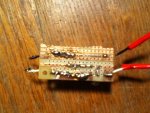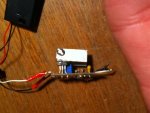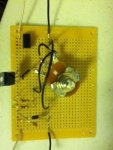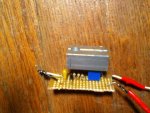Hey guys. I recently had a LPC-815 build running with an lm 317 driver at about 270mA. It worked nicely for about 3 months then all of a sudden went dim on me.
I thought the diode went out so I bought a new LPC-826. I modified the driver to give me 380mA (a little below the suggested current just to play it safe) and hooked it up. It worked really well for about 2 minutes then as I was putting it into the flashlight host I had rigged up it went dim as well.
I really hope I didn't burn out another brand new diode. I'm not sure how it happened if it did indeed burn out.
Could it just be a short in the circuit that's causing that to happen? Is there anything I could be doing wrong? Why is it dim just after having it hooked up for a few minutes?
I thought the diode went out so I bought a new LPC-826. I modified the driver to give me 380mA (a little below the suggested current just to play it safe) and hooked it up. It worked really well for about 2 minutes then as I was putting it into the flashlight host I had rigged up it went dim as well.
I really hope I didn't burn out another brand new diode. I'm not sure how it happened if it did indeed burn out.
Could it just be a short in the circuit that's causing that to happen? Is there anything I could be doing wrong? Why is it dim just after having it hooked up for a few minutes?









